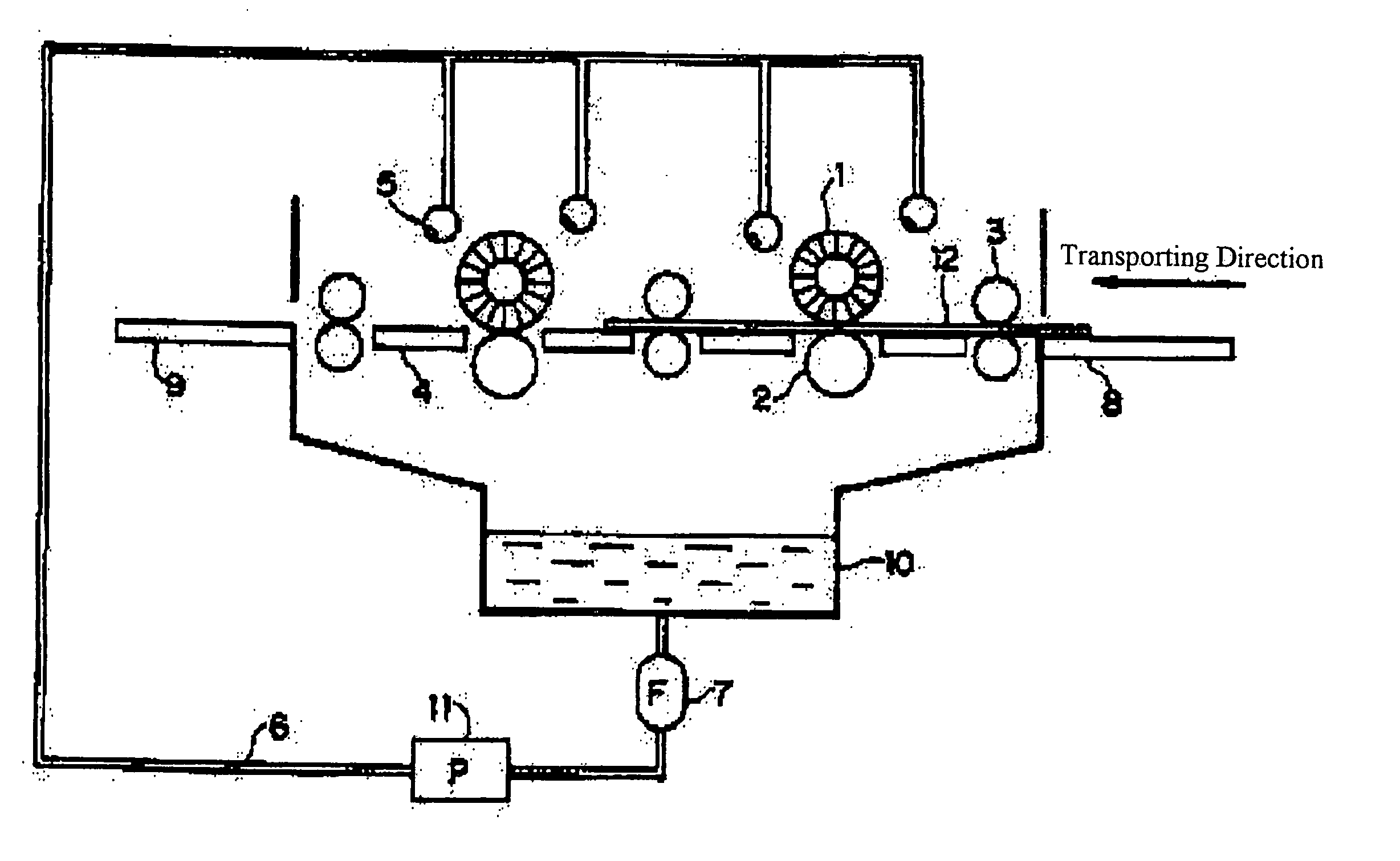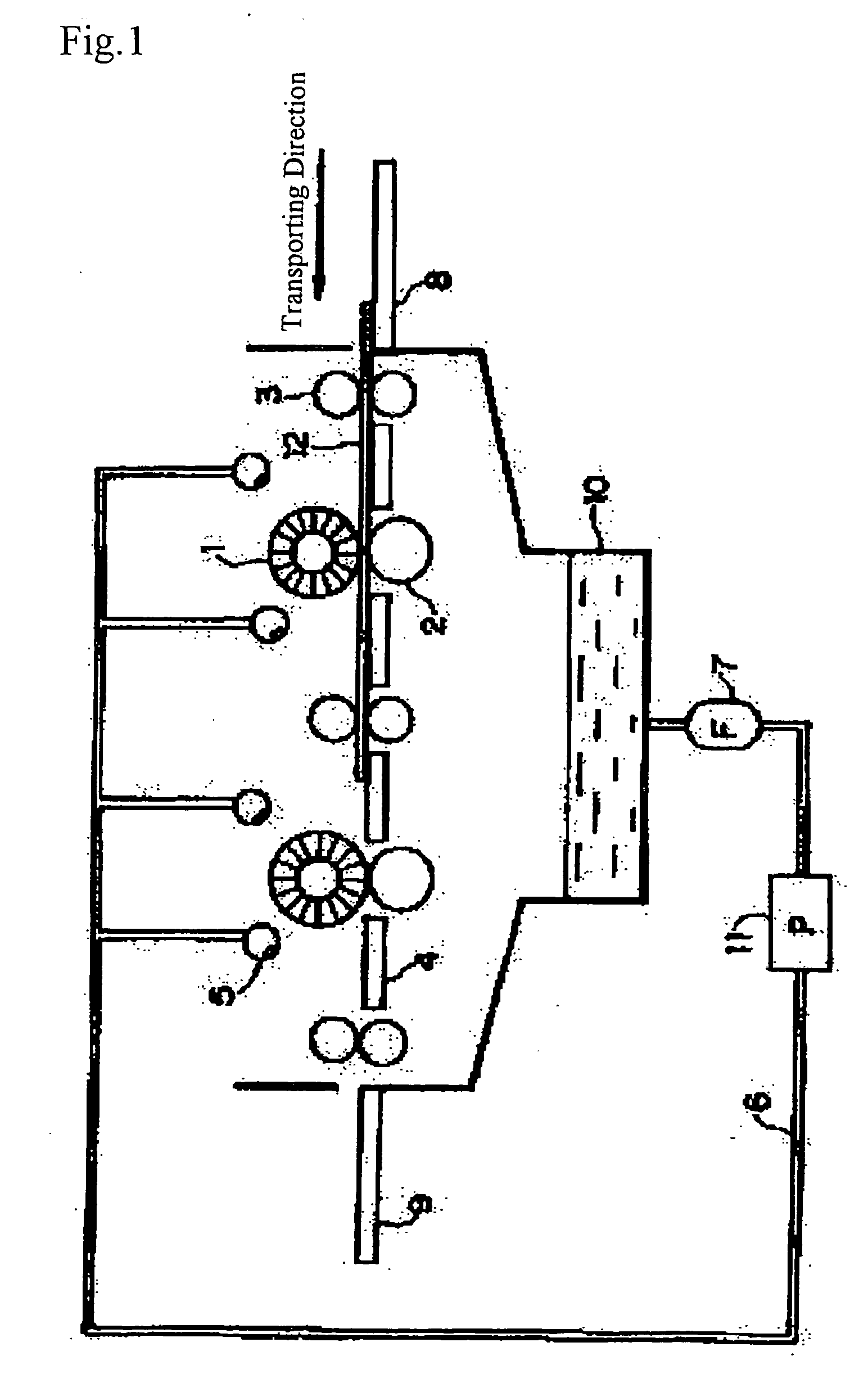Method for preparation of lithographic printing plate and lithographic printing plate precursor
a technology of lithographic printing plate and precursor, which is applied in the field of preparation of lithographic printing plate and lithographic printing plate precursor, can solve the problems of deficiency of water resistance and film strength of the photosensitive layer hardened with exposure, and achieve excellent safelight aptitude and high sensitivity
- Summary
- Abstract
- Description
- Claims
- Application Information
AI Technical Summary
Benefits of technology
Problems solved by technology
Method used
Image
Examples
examples
[0255] The present invention will be described in more detail with reference to the following examples, but the invention should not be construed as being limited thereto.
[Preparation of Support 1]
[0256] An aluminum plate (material: 1050) having a thickness of 0.3 mm was subjected to a degrease treatment with an aqueous 10% by weight sodium aluminate solution at 50° C. for 30 seconds to remove rolling oil on the surface thereof. Thereafter, the aluminum plate surface was grained using three nylon brushes implanted with bundled bristles having a diameter of 0.3 mm and an aqueous suspension (specific gravity: 1.1 g / cm3) of pumice having a median diameter of 25 μm, and then thoroughly washed with water. The plate was etched by dipping it in an aqueous 25% by weight sodium hydroxide solution at 45° C. for 9 seconds and after washing with water, dipped in an aqueous 20% by weight nitric acid solution at 60° C. for 20 seconds, followed by washing with water. The etching amount of the gr...
examples 1 to 12
(1) Exposure, Development and Printing
[0283] Each of Lithographic Printing Plate Precursors (1) to (12) was subjected to imagewise exposure using a semiconductor laser of 405 nm having an output of 100 mW while changing energy density.
[0284] Then, development processing was performed in an automatic development processor having a structure shown in FIG. 1 using Developer (1) having the composition shown below. The pH of the developer was 5. The automatic development processor was an automatic processor having two rotating brush rollers. As for the rotating brush rollers used, the first brush roller was a brush roller having an outer diameter of 90 mm and being implanted with fiber of polybutylene terephthalate (bristle diameter: 200 μm, bristle length: 17 mm), and the brush roller was rotated at 200 rpm in the same direction as the transporting direction (peripheral velocity at the tip of brush: 0.94 m / sec). The second brush roller was a brush roller having an outer diameter of 6...
examples 13
[0290] The image exposure, development processing and printing were conducted in the same manner as in Example 1 except for changing the polyoxyethylene naphthyl ether used in Developer (1) to an anionic surfactant having the structure shown below and further adding. 0.1 g of a defoaming agent, FS Antifoam DR110N (produced by Dow Corning Corp., silicone-based emulsion). As a result, the evaluation results similar to those in Example 1 were obtained.
PUM
| Property | Measurement | Unit |
|---|---|---|
| wavelength range | aaaaa | aaaaa |
| pH | aaaaa | aaaaa |
| pH | aaaaa | aaaaa |
Abstract
Description
Claims
Application Information
 Login to View More
Login to View More - R&D
- Intellectual Property
- Life Sciences
- Materials
- Tech Scout
- Unparalleled Data Quality
- Higher Quality Content
- 60% Fewer Hallucinations
Browse by: Latest US Patents, China's latest patents, Technical Efficacy Thesaurus, Application Domain, Technology Topic, Popular Technical Reports.
© 2025 PatSnap. All rights reserved.Legal|Privacy policy|Modern Slavery Act Transparency Statement|Sitemap|About US| Contact US: help@patsnap.com



